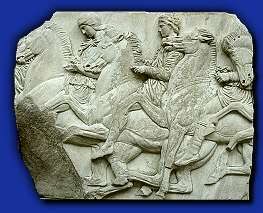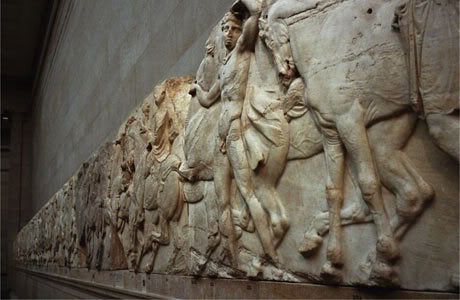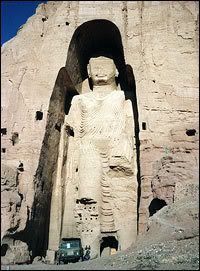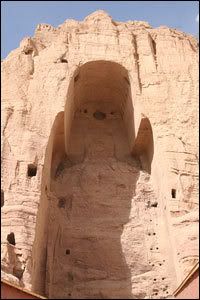
I have changed my mind.
No kidding: I have changed my mind.
My rethink is about the heatedly debated question of whether the sculptures that once covered the pediments and frieze of the Parthenon, which are now housed in the British Museum in London, should be repatriated to Greece. I have said no before. Now I say yes.

No kidding: I have changed my mind.
My rethink is about the heatedly debated question of whether the sculptures that once covered the pediments and frieze of the Parthenon, which are now housed in the British Museum in London, should be repatriated to Greece. I have said no before. Now I say yes.

The sculptures were formerly known as the Elgin Marbles, after Lord Elgin, British ambassador to the Ottoman empire — which then ruled Greece — who collected and shipped them home in 1801. The Parthenon had been severely damaged in an earlier war, and the site was unprotected, so it is quite possible that Lord Elgin saved them from destruction. But in today's climate of ethnocentrism and political correctness, he is reviled.
The sculptures now reside in a grand room built specially for the purpose, well displayed (except they necessarily face inward rather than outward as they would have on the Parthenon). I've been fortunate enough to visit them twice. Despite being considerably damaged, with portions missing — especially on the pediment carvings — they are still powerful and offer a fascinating glimpse into the civic and religious atmosphere of Attica's golden age.
While I can sympathize with the Greeks' (and many others') desire to return the artwork to its original site, especially now that a large modern museum has opened at the Parthenon, I can't buy it in principle. The argument from ethnicity is irrelevant: few of today's Greeks are descended from those who lived in fifth century B.C. Athens. That aside, to cater to the view that every work of art "belongs" to the country on whose territory it was made would wreck every major museum collection in the world. To take the land-of-origin idea to its logical conclusion, the Cincinnati Art Museum would contain only works created in Cincinnati. Or in the museum's own ZIP Code.
So why have I come around to the view that it's time to send the Parthenon sculptures back? Because that will help assure that they are preserved when the United Kingdom becomes a Muslim-dominated country, as it seems determined to do.
During the Blitz in World War II, the National Gallery in London wisely packed up its treasures and stored them for safekeeping far from the city (I believe they were sent to a cave in Wales). The Parthenon sculptures could be equally vulnerable in another 10 or 20 years — or today, for all I know.
Muslim fanatics haven't a drop of tolerance for religious art, or even art depicting human figures, from other cultures. Whether the Parthenon sculptures are religious art depends on definition; worship of the gods and the celebration of the polis were entwined in the age of Pericles. Regardless, Muslim iconoclasts don't make fine distinctions. Buddhism is not a theistic religion either, which didn't save the 1,50-year-old statues at Bamiyan in Afghanistan from the Taliban.
The sculptures now reside in a grand room built specially for the purpose, well displayed (except they necessarily face inward rather than outward as they would have on the Parthenon). I've been fortunate enough to visit them twice. Despite being considerably damaged, with portions missing — especially on the pediment carvings — they are still powerful and offer a fascinating glimpse into the civic and religious atmosphere of Attica's golden age.
While I can sympathize with the Greeks' (and many others') desire to return the artwork to its original site, especially now that a large modern museum has opened at the Parthenon, I can't buy it in principle. The argument from ethnicity is irrelevant: few of today's Greeks are descended from those who lived in fifth century B.C. Athens. That aside, to cater to the view that every work of art "belongs" to the country on whose territory it was made would wreck every major museum collection in the world. To take the land-of-origin idea to its logical conclusion, the Cincinnati Art Museum would contain only works created in Cincinnati. Or in the museum's own ZIP Code.
So why have I come around to the view that it's time to send the Parthenon sculptures back? Because that will help assure that they are preserved when the United Kingdom becomes a Muslim-dominated country, as it seems determined to do.
During the Blitz in World War II, the National Gallery in London wisely packed up its treasures and stored them for safekeeping far from the city (I believe they were sent to a cave in Wales). The Parthenon sculptures could be equally vulnerable in another 10 or 20 years — or today, for all I know.
Muslim fanatics haven't a drop of tolerance for religious art, or even art depicting human figures, from other cultures. Whether the Parthenon sculptures are religious art depends on definition; worship of the gods and the celebration of the polis were entwined in the age of Pericles. Regardless, Muslim iconoclasts don't make fine distinctions. Buddhism is not a theistic religion either, which didn't save the 1,50-year-old statues at Bamiyan in Afghanistan from the Taliban.





3 comments:
Rick, I am afraid you may be right about Grecian art being safer in Greece than in Britain ; What a pity we can't say the same about Egyptian pieces Bonaparte brought to France, because Egypt seems to be sliding to fanaticism !
I'm with you Rick, I think the greeks have no claim to the marbles but given the situation in Britain it makes sense to send them to greece. The poms are stuffed I doubt whether they have enough time to recover and take control of their country again.
The Brits looted every country wherever they go in the name of antiquity and so called war trophies.Their museums clearly reflect this.
Post a Comment